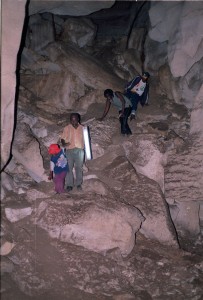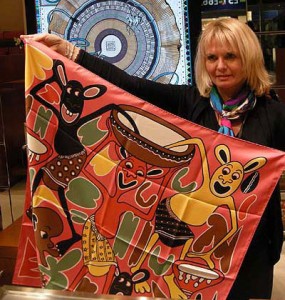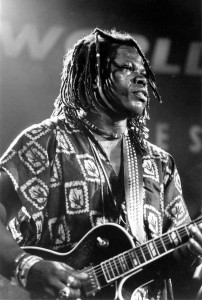Edited by John Cooper-Poole (UK) and Marion Doro (USA)
SOCIETIES, RELIGION AND HISTORY. CENTRAL-EAST TANZANIANS AND THE WORLD THEY CREATED, C.200 BCE TO 1800 CE, by Rhonda M.Gonzales, Columbia University Press, New York, 2009, pp.ix and 257, ISBN 978-0-231-14242-7. £41.00
Forty years ago a conference took place at the University of Dar es Salaam on the historical study of African religion. The book which resulted in 1972, edited by myself and Isaria Kimambo, not surprisingly contained many chapters on Tanzania. Kimambo himself wrote on Upare religion; Marcia Wright wrote on Nyakyusa cults and politics; Edward Alpers wrote about the expansion of Islam in south-eastern Tanzania and north-eastern Mozambique; Gilbert Gwassa discussed the role of Kinjikitile in Maji Maji; and I described Anglican attempts to adapt Makua initiation rites. But though African religious history in Tanzania got off to such a vigorous start for a long time little happened. Tanzanian historiography entered its materialist stage; Gwassa died; I did not finish my books on Masasi Anglicanism or on witchcraft eradication cults; Alpers did not finish his book on Morogoro. The programme stated in The Historical Study of African Religion was not pursued.
Since then the ecological turn in Tanzanian historiography has seen some important publications dealing with religion. In 1996 Greg Maddox, James Gibling and Isaria Kimambo published the edited collection, Custodians of the Land. Ecology and Culture in the History of Tanzania. More recently Alpers’s chapter in The Historical Study has been surpassed by Felicitas Becker’s Becoming Muslim in Mainland Tanzania, 1890-2000 (OUP, 2008). Maji Maji has been comprehensively re-visited in James Giblin and Jamie Monsons’s Lifting the Fog of War (Brill, 2010). But Rhonda Gonzales still thinks it important to go all the way back to The Historical Study of African Religion and to re-state its major argumentative propositions. African religions are not incoherent and ‘primal’; they have histories; they do not derive from political or economic systems. In fact, religion – which she defines as establishing and managing relationships with spirits – is primary. It represents both the longest continuities in Bantu cultures and the most flexible responses to change. Gonzales did not go to Tanzania to study religion but with an Afro-feminist agenda. Central-East Tanzanians themselves taught her what was important.
The chapter in The Historical Study which is most important to Gonzales is not, however, any of the specific Tanzanian case studies but Christopher Ehret’s ‘Language Evidence and Religious History’. At UCLA Ehret became her major mentor. In her book she draws heavily on his methods of historical linguistic reconstruction. She also makes extensive use of recent archaeological work, especially that of the Tanzanian archaeologist, Felix Chami, who has claimed to have discovered the site of Rhapta, the famed entrepot of the Periplus some fifty miles south of Dar es Salaam. But archaeologists deal mostly with potsherds. Language embodies ideas. So even though Gonzales manages to socialize pottery and has interesting pages on it as a female ‘mystery’ in a matrilineal society, it is essentially words which interest her. Very old words for ‘God’ and ‘spirit’; much newer loan words for new sorts of cults or divinities; words for male and female initiands; words for rituals.
She deals with what she calls ‘the Ruvu group of societies’, speakers of ten related languages across ‘a large block of central-east Tanzania’, who are heirs to cultures ‘that have occupied these territories for the past 1,500 years’. She dislikes the notion of ‘hinterland’ since she argues that these societies have interacted with the coast for more than a millennium. She discusses their ideas of divinity, environment, kinship, healing. She is familiar with missionary writing, ethnography and anthropology. I would say that she is more successful in showing continuities than she is in documenting change. The book is hard going. There is little which is individual or colourful. Extraordinarily there are no maps and no illustrations. But it is a very important book which I hope may revive the project of African religious history in Tanzania.
Terence Ranger
STREET DREAMS AND HIP HOP BARBERSHOPS: GLOBAL FANTASY IN URBAN TANZANIA. By Brad Weiss. Indiana University Press, 2009. pp249. ISBN 9780253220752. £15.99.
This ethnographic study of cultural practices provides an insight into the modern tensions that plague the lives of urban male youth in the political economic context of expanding neo-liberal consumerism in Arusha. Focussing on the social and idiomatic dynamics that circulated in and around street side barbershops in central Arusha at the turn of the millennium, Weiss uses these sites and other urban locales as lenses to elicit views of social struggle, identity politics and agency within the local-global conundrum that affects Tanzanians. Founded on the challenge laid down by certain anthropologists, namely to inquire into how human beings ‘construct their intimate, everyday life-worlds at the shifting intersections of here, there, elsewhere, everywhere’ (p. 8), the book seeks to contribute to anthropology’s investigation into globalisation and neoliberalism. Moving beyond the current approach which catalogues the extent to which forces are incorporated into ‘local’ worlds’ Weiss instead reframes neoliberalism as something more than a realm of external relations to which communities respond. This he does by arguing that male youth draw on evolving popular culture to position themselves in the wider world. However, Weiss asserts, this is only achievable, as Tanzanians are well aware, to a very limited degree as Tanzanians remain self-consciously marginalised or even in a relation of abject disjuncture, from an imagined globalised and interrelated world. This liminal positioning, neither fully in, nor fully out, he presents as the lived experience of neoliberalism’s dilemma.
Referring to the structural transformations that have been occurring in Tanzania’s political economy since the 1980s, the broader context he suggests is the ‘sudden crash’ Tanzanians experienced which came at the heels of unprecedented possibilities. These possibilities, though unrealised by the vast majority of Tanzanians as anything but possibilities, made it ‘possible for a broad swath of people to desire signs and styles of a global order while finding ever narrower means by which to satisfy them (p.9).
The book is composed of seven chapters, and an introduction and conclusion. The introductory chapter provides an excursion into the ethnographic setting and the topical challenges. In Chapter 1 Weiss summarises various theoretical vehicles in the study of popular culture ranging through themes of familiarisation, distinction, mimicry, alterity and fantasy as discussed by the likes of Bakhtin, Bourdieu, and Zizek. The following three chapters move through discussions of masculine self-fashioning to humans that can endure modernity’s onslaught. Explorations into hip hop imagery, metaphors and material culture are set alongside discussions of the shared discourses of suffering and pain that infuse understandings of youths’ liminal predicament as quasi-members of an imagined global hip hop culture. The subsequent three chapters explore youths’ struggles to create viable adulthoods where a respectable family and livelihood are understood as pivotal, but how certain popular culture genres (fashion, television watching, and music) become instrumental to these challenges. Chapter 5 centres on young females in Arusha through the analysis of popular culture idioms (hair salons, clothing and music) and the discourses utilised by men to marginalize women and reposition themselves as reproductive agents in a world where men’s productive capacity is tenuous. Chapter 6 describes the importance of soap operas for Arusha’s youth as an educational tool and also as a vehicle for imagining and consuming the world beyond. Music and religion form the focus of the final substantive chapter and here Weiss evinces the importance of ‘localised rap lyrics, Pentecostal Christianity and Islam to discern understandings of a world in crisis. The concluding chapter brings the arguments home and summarises Arusha as seen during Weiss’s final visit in 2006. The book also contains three ‘portraits’ which offer some insights into the lives of certain individuals that Weiss came to know.
Certain weaknesses and lacunae are evident in the lack of a theory of value and attention to conceptualising constructs such as neo-liberalism and the New World Order. Related to the latter is the lack of attention to the notion of continuity and discontinuity. For example, Weiss raises the question of whether the current moment of what is now called neoliberalism is distinctly different or a recurring structural phenomenon affecting social life in east Africa but fails to address it. He opines instead that this is a distinctly difficult problematic with which to engage and in doing so fails to address a pivotal issue for the issues at hand. Those who enjoy anthropology for the sake of ethnography may feel slightly disappointed at the lack of substance for the sake of theory, though, undoubtedly, those with a penchant for anthropology with a heavy dose of theory will enjoy it and may even learn something new. Weiss provides some fresh thinking and contributions to numerous areas of study including cultural studies, youth, neo-liberalism, citizenship, urban anthropology and modernity. Its major strength lies in its generation of ideas about the use of certain theoretical frameworks and their flexibility for future analyses.
Richard Sherrington
CONTEMPORARY DAR ES SALAAM by Muzu Sulemanji, Mkuki na Nyota 2010. ISBN 978 9987 08 077 9. £15.00 + postage. Available from Salma Sulemanji, hugolivia@yahoo.com.
Like the author, Muzu Sulemanji, I grew up in Dar es Salaam, leaving in 1966. Walking around the city centre on my return in 2004, I felt as if I was in a time warp, so little had changed; there was the Askari Memorial, my old school St. Joseph’s, oh and even the Sno-Cream Parlour!
Time marches on though, and with the new economic climate the pace of change has accelerated dramatically. Now, each year when I visit Tanzania I see that yet more familiar city buildings have been demolished, replaced by concrete and glass skyscrapers. So, “Contemporary Dar es Salaam” is a timely publication, being both a social and historic document, capturing images of old landmarks before they are lost forever, and marking not only the bold new modernity but also the faces of the people who inhabit this ever-expanding city.
The colonial heritage and fusion of cultures resulted in a range of architectural styles giving Dar its unique character and this has been carefully recorded in a series of photographs of individual buildings.
Muzu Sulemanji has explored the city with his camera from all angles. He presents a broad spectrum of life in Dar, illustrating its colour and variety whilst also showing the extremes of wealth and poverty that exist in all cities. The harshness of street life contrasts with the opulent interiors of expensive hotels, casinos and certain private homes; new high-rise blocks tower above the corrugated iron or makuti rooftops of their neighbours.
The people of the city are celebrated, in all their various walks of life, at work and play, from the colourful and crowded Kariakoo Market to a lone cyclist in the rain, from goat racing to snake dancing.
This is essentially a picture book, with an absolute wealth of images on 96 pages and an interesting potted history of the city by Ghalib Jafferji. The standard of photography is excellent, although with multiple images on almost every page I would have liked some of the captions to be presented a little more clearly.
The author describes his book as “a love letter to both the old and the new” and quotes the wise man who once said “….in this great future, you cannot forget your past”. I’m being sentimental I know, but what a disappointment last year to find that Sno-Cream had vanished too!
Patricia Cumberland-Derrick
DAR ES SALAAM 1963, A NEW GRADUATE ENCOUNTERS AN EMERGING AFRICAN NATION. By Tom Torrance. General Store Publishing House, Renfrew, Ontario, Canada 2010. 150pp ISBN 978-1-907508-73-2 $19.95 Cdn. + postage. Order from Amazon or kttorrancerogerscom.
In the 1960s many idealistic young people wanted to offer their services to help fight poverty in the third world. Voluntary Service Overseas was started in the UK in 1958, the US Peace Corps in 1960 and the Canadian University Service Overseas in 1961. All received financial support from their governments, but Tom Torrance, a young Canadian economics graduate, decided to go it alone. In January, 1963 he travelled to Tanganyika at his own expense, having obtained a temporary position on local terms as a junior economist in the Treasury at a salary of £798 a year. This highly readable book is an account in anecdotal form of his first three months in Dar es Salaam. He describes his experiences as a self–confessed greenhorn in an environment that could not have been further removed from his hometown in Ontario.
The book consists of thirty six vignettes that have been fashioned from notes jotted down on scraps of paper, diary entries and, most importantly, letters home. As the author explains, this book would never have been written had it not been for members of his family who kept all the letters he wrote to them from Africa. Although he describes himself as having been shy and insecure, it must have taken considerable pluck to leave his Canadian government job in Ottawa, his family and his girlfriend to work in newly independent Tanganyika. As his friend writes in the foreword, “He stepped off the edge and ventured fully into the unknown.”
Initially, the unknown territory consisted of the Salvation Army camp at Mgulani where he was lodged in a ‘little banda in the corner” at what he considered an unacceptably high rent of twenty shillings a day for room and board. The book starts with a wryly humorous description of his accommodation; his efforts to cope with the unaccustomed tropical heat; the library with its tattered sofas and dog-eared books and magazines and his meeting with the camp director who spells out the strict rules of conduct enforced by Ali the Askari.
He goes on to describe the problems he faces in his job at the Treasury where he learns that he will be responsible for labour issues. He tours Dar es Salaam with James, a trainee magistrate and a fellow resident at Mgulani, who helps him discover the realities of making a living in the city and the complexities of the informal sector.
The camp accommodated people from a variety of backgrounds and during his short stay there Tom befriends many of them: there is Tanganyika Standard journalist Jack Hattersley; old Africa hand Rufiji Barker; Musa the mystery man, Robert the UN diplomat and Joan Wicken, personal assistant to President Nyerere, who not only explains the meaning of African Socialism and ujamaa but also shows Tom where he can buy fish and chips in town.
Readers who knew Dar es Salaam in the sixties will be reminded of the Long Bar at the old New Africa Hotel and the Roof Garden at the Metropole Hotel, both now sadly demolished. Tom also describes visits to the Avalon Cinema and the Canton Chinese Restaurant and when he acquires a bicycle he explores other parts of the city. (He feels uncomfortable in the affluent suburb of Oyster Bay.) He meets an old fisherman on one of his expeditions and resolves to take Swahili lessons, the better to communicate. Unfortunately, his exploring comes to an end when his bicycle is stolen from outside the British Council but he makes friends with the recently arrived members of the Peace Corps who invite him along on their outings, including one to Bagamoyo in search of a ghost.
The twenty-three year old Tom Torrance comes across as a serious, highly principled but inexperienced young man, sometimes painfully honest, especially when it comes to his attempts at romance. When he receives a formal invitation to attend a drinks party at the residence of the Ford Foundation representative he readily admits that it is the first formal invitation he has received in his life “except for an invitation to a wedding in Canada’. He is not keen on the idea of attending an “expatriate cocktail party” but goes along anyway. After a couple of beers, he loses enough of his shyness to engage in a little self-promotion that would eventually lead to a transfer to the Ministry of Development and Planning and later to a post with the ILO in Geneva.
It is not unusual for a book of reminiscences to reveal as much about the writer as about the incidents he describes. This book traces how a young man’s experiences in Africa began to transform his attitudes; how his preconceived ideas were shattered and how he began a journey of self-discovery that changed his outlook on life and convinced him that the inherent worth of each individual was paramount. Those who remember Dar es Salaam in the sixties will find this a very enjoyable read and it will also appeal to the general reader with an interest in the early years of Tanganyikan independence.
Gloria Mawji
TANZANIA IN TRANSITION; FROM NYERERE TO MKAPA. Havnevik, K and Isinika, C. (eds); Published by Mkuki na Nyota and The Nordic Africa Institute 2010. pp284. ISBN 978-9987-08-086-1. £24.99. Available from African Books Collective www.africanbookscollective.com.
This is an interesting book in which a range of Tanzanian, Nordic and other European academics contribute articles which the editors bring together to make a coherent case that there was less transformation in Tanzania during Mkapa’s presidency than is sometimes claimed – not least by international donors. There is a helpful reappraisal of Nyerere’s development model, which was sometimes praised uncritically in its early years, and then unfairly condemned as a total failure in the 1980s. The achievements which continue to have an impact on Tanzania today – such as the peace and stability sadly lacking in neighbouring countries – are revisited.
The authors provide evidence that more of Nyerere’s legacy – positive and negative – remained during Mkapa’s presidency than is sometimes perceived. Economic liberalisation has seen significant increases in GDP, yet agricultural productivity actually decreased, and rural poverty remains – it is sectors like mining and tourism which have grown. Brian Cooksey provides a fascinating chapter on corruption – reading the left-hand column of his tables shows progress in tackling this (heralded by some donors) while the right-hand tables show no improvement, even a worsening situation in some cases. As with Nyerere’s era, you can find selective evidence on both sides, to support opposing ideological perspectives.
Other chapters cover agrarian-land, gender and forestry issues, development strategy and ideology, aid and development assistance and political change. There are some positive signs, but no major transformation. With CCM’s dominance continuing and the opposition fragmented, multi-partyism is seen to have had little impact, other than in Zanzibar.
Many TA readers will find the book interesting but may not be surprised by its conclusions. Academic language could be a barrier in a few chapters, but the book will be of interest to general readers as well as researchers. In summary; perceptions may change, but the reality faced by most Tanzanians has changed far less.
Nigel West
REVIEW CONTRIBUTORS
Patricia Cumberland-Derrick lived in Dar es Salaam from 1952 to 1966. After leaving St. Joseph’s Convent School she worked briefly as secretary to Sir Andy Chande at Chande Industries in Dar es Salaam. She is an artist and performer in the UK and presented an exhibition on the Tanganyika Groundnut Scheme at Hornsey Library in London in 2005.
Gloria Mawji is a British expatriate who has lived in Dar es Salaam for over thirty years. She taught at the International School of Tanganyika and has a particular interest in local history.
Terence Ranger was the first Professor of History at the University College of Dar es Salaam, 1963-1969. He has been a member of the Britain Tanzania Society for thirty years. He is currently Emeritus Professor at the University of Oxford. His main contribution to the historical study of African religion is his book about the high-god shrines in the Matopos, Voices From the Rocks, James Currey, Oxford, 1999.
Richard Sherrington holds a PhD in Social Anthropology and undertook his doctoral and subsequent post doctoral research in rural and urban Tanzania. Currently he is a senior consultant with Environmental Resources Management (ERM UK) and an Associate Researcher at the Centre for African Studies, University of Cambridge.
Nigel West worked as an Education Advisor for Oxfam from 1984 to 1995 and made two study tours to Tanzania, which informed the development of teaching materials for UK schools. He currently coordinates a community health programme in Sheffield, delivered by volunteers in disadvantaged communities, which has also drawn on his experience in Tanzania.






